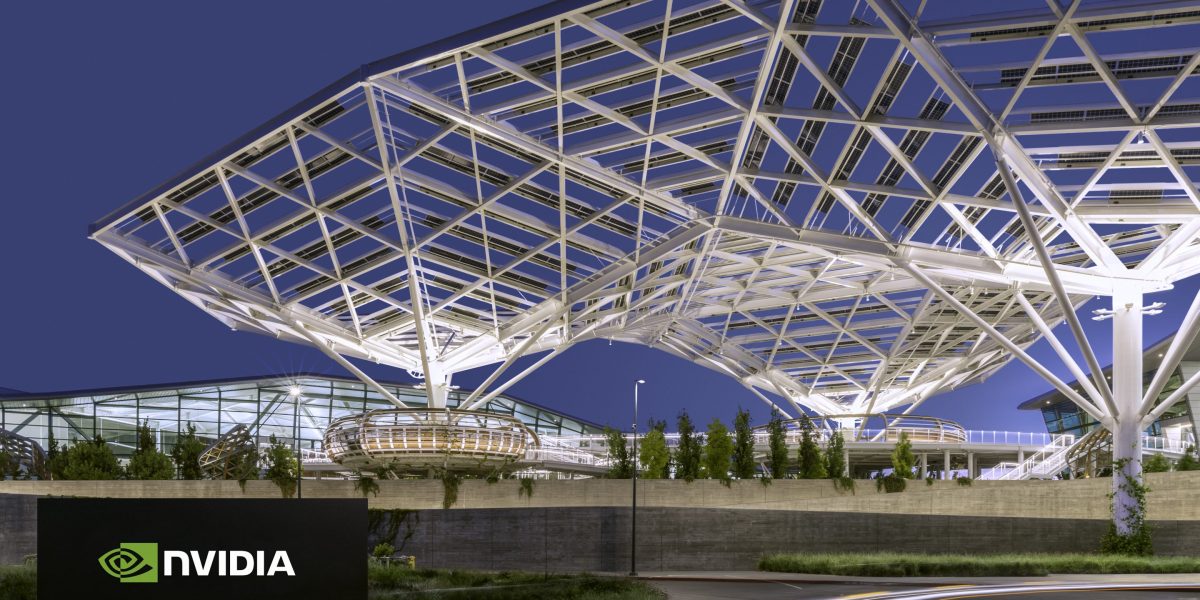Nvidia’s headquarters in Santa Clara, Calif., stands as both a testament to, and a literal product of, the same chips and technologies that have fueled the company’s dramatic rise to a $4 trillion valuation. Rather than simply being occupied by technologists, the buildings themselves are tangibly informed by Nvidia’s own silicon, custom software, and design philosophy.
Nvidia’s headquarters are highlighted by two massive buildings, named after Star Trek ships: the 750,000 square-foot Voyager, and the 500,000 square-foot Endeavor. A four-acre park connects the two buildings. Building on Endeavor finished in 2017, and construction on Voyager wrapped up five years later in 2022. According to Venturebeat, both buildings cost $920 million to realize.
Unlike traditional architectural projects, Nvidia and its lead design partner, global firm Gensler, used machine-learning tools and custom visualization software powered by Nvidia GPUs to optimize everything from daylight flow and acoustic dynamics to employee movement and collaboration zones.
“We got to test out our technology on our own project,” Jack Dahlgren, project and design manager at Nvidia, told The Wall Street Journal.
The triangle motif: A nod to 3D graphics, and a lesson learned
But a key part of the campus design, which you’ll see literally everywhere, from structures to walkways to windows, is triangles. You can’t throw a rock in Nvidia HQ without hitting a triangle.
“Our triangle motif here is really a reflection of the origins of the company,” Dahlgren said. “3D graphics were originally based on drawing triangles.”
Nvidia
Indeed, triangles are the most basic polygon; any complex 3D shape can be broken down into a mesh of interconnected triangles. But there’s a deeper meaning to why Nvidia has triangles all over its campus.
Back in 1995, Nvidia debuted its first chip, the NV1, which could render quadratic surfaces; it was a pretty big risk, and a radical departure from, the industry-standard triangle-based graphics. It was intended to be a disruptive innovation, but the complexity of NV1, and its lack of developer support, ultimately proved to be its undoing. The company’s similarly ambitious and subsequently canceled NV2 chip almost derailed the startup entirely.
But Nvidia pivoted. With NV3, Nvidia went back to triangles, the foundation for modern-graphics processing, and the move paid off: Nvidia was able to generate much-needed revenue, which kept the company afloat so it could later reinvest in R&D and pursue future innovations, setting the stage for its rise in the graphics industry.
Of course, there’s much more to Nvidia’s headquarters than just triangles. The entire campus features 511 triangular skylights, more than 14,000 plants (including a massive 80-foot living wall), and crisscrossing paths and shortcuts both indoors and outdoors to minimize travel times but still encourage spontaneous encounters, in the same way Apple’s “spaceship” campus, Apple Park, achieves the same goal with its circular walkways. Nvidia’s Dahlgren said should the company build a third building, it would “undoubtedly” use AI to help design the facility.
You can learn more about Nvidia’s headquarters from this fascinating video shot by The Wall Street Journal:
For this story, Fortune used generative AI to help with an initial draft. An editor verified the accuracy of the information before publishing.
